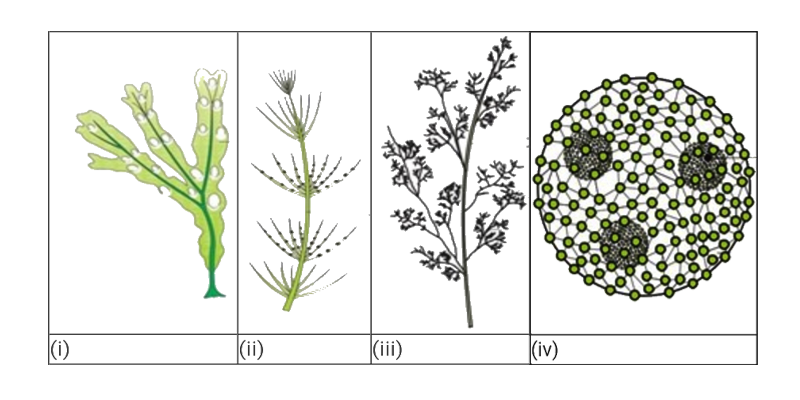Haplo-diplontic and diplontic algae respectively areSolution in Telugu
Algae which show Haplo - diplontic life cycle is Ectocarpus. Algae that show Diplontic life cycle is Fucus.
Topper's Solved these Questions
- BOOK - VIKRAM PUBLICATION ( ANDHRA PUBLICATION)CHAPTER - PLANT KINGDOMEXERCISE - SHORT ANSWER TYPE QUESTIONS8videos
PLANT KINGDOM
- BOOK - VIKRAM PUBLICATION ( ANDHRA PUBLICATION)CHAPTER - PLANT KINGDOMEXERCISE - LONG ANSWER TYPE QUESTIONS5videos
PLANT KINGDOM
- BOOK - VIKRAM PUBLICATION ( ANDHRA PUBLICATION)CHAPTER - PERIPLANETA AMERICANA (COCKROACH)EXERCISE - IMPORTANT QUESTIONS15videos
PERIPLANETA AMERICANA (COCKROACH)
- BOOK - VIKRAM PUBLICATION ( ANDHRA PUBLICATION)CHAPTER - SCIENCE OF PLANTS - BOTANYEXERCISE - IMPORTANT QUESTIONS8videos
SCIENCE OF PLANTS - BOTANY
Similar Questions
Differentiate between red algae and brown algae.
02:46View SolutionName three groups of plants that bear archegonia. Briefly describe the life cycle of any one of them.
02:00View SolutionHead of cockroach is hypognathous beccause
01:36View SolutionName the books written Parasara and mention the important aspects discussed in those books.
02:50View SolutionHAPLO-DIPLONTIC LIFE CYCLE
02:34View SolutionHaplo-diplontic life cycle is found in
01:56View SolutionMost algal genera show haplontic life style. Name an alga which is (a) Haplo diplontic (b) Diplontic
01:43View SolutionHaplo - diplontic condition is exhibited by
03:16View SolutionWhich one of following algae shows haplo-diplontic life cycle ?
View SolutionWhich of these algae have a haplo - diplontic life cycle ?
 View Solution
View SolutionMost algal genera show haplontic life style. Name an alga which is (a) Haplo diplontic (b) Diplontic
02:40View SolutionHaplo-diplontic life cycle is found in
01:52View SolutionMost algal genera show haplontic life style. Name an alga which is (a) Haplo-diplontic (b) Diplontic
02:16View SolutionAll bryophytes exhibits haplo-diplontic life cycle.
01:49View SolutionWhich of these algae exhibit the haplo-diplontic life cycle?
01:37View SolutionDescribe the haplo-diplontic life cycle.
02:09View Solution

